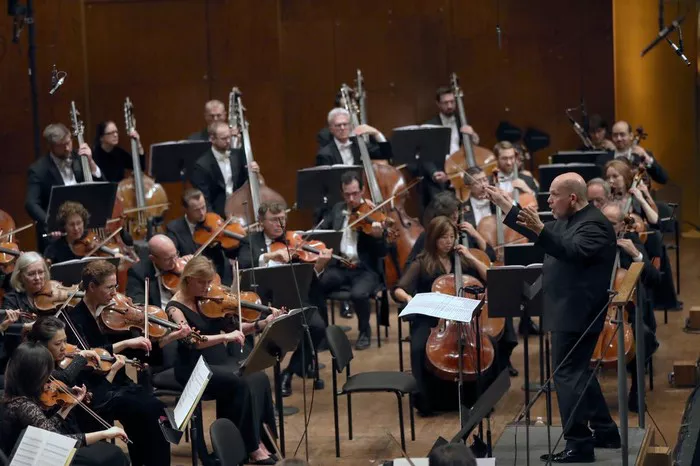The “Christmas Canon in D” is a unique and cherished holiday piece that has enchanted listeners around the world. It combines the classical elegance of Johann Pachelbel’s “Canon in D” with a heartwarming Christmas twist. This fusion creates a beautiful and memorable experience for audiences of all ages. The piece has become a staple during the holiday season, often featured in various media and performances. Understanding its origins, adaptations, and impact provides insight into why it remains so beloved.
I. The Origin of Pachelbel’s Canon in D
Johann Pachelbel: A Brief Biography
Johann Pachelbel was a German composer born in 1653. He is best known for his “Canon in D,” a piece that has become iconic in the classical music world. Pachelbel’s music often included elements of Baroque style, characterized by intricate counterpoint and harmonious structures. He composed various works, including fugues, toccatas, and other canons, contributing significantly to the Baroque repertoire.
The Composition of Canon in D
Pachelbel’s “Canon in D” is a part of a larger suite, often referred to as the “Pachelbel Canon.” It is written for three violins and a basso continuo. The piece is structured around a repeating bass line known as a ground bass. The melody played by the violins varies over this bass line, creating a rich and layered texture.
The piece follows a simple but elegant form. It starts with a short introduction, leading into the main canon. The canon is built on a repeated melody, with each violin entering at different times to create a harmonious interplay. The piece concludes with a final section that recapitulates the main themes.
II. The Christmas Adaptation
The Creation of Christmas Canon
In the late 1990s, the Trans-Siberian Orchestra (TSO) adapted Pachelbel’s “Canon in D” into a Christmas version, known as the “Christmas Canon.” This adaptation was part of their holiday album, “The Christmas Attic.” The TSO’s arrangement introduces lyrics that reflect the themes of Christmas, blending classical and contemporary elements.
The Christmas Canon retains the essence of Pachelbel’s original composition but adds a vocal layer. The lyrics, written by TSO’s Paul O’Neill, offer a touching narrative that complements the music. The adaptation incorporates orchestral elements, such as strings and choir, enhancing the piece’s festive atmosphere.
The Popularity and Impact
The Christmas Canon quickly gained popularity, becoming a seasonal favorite. Its soothing melody and uplifting lyrics resonate with listeners during the holiday season. The piece has been featured in numerous holiday playlists, performances, and media presentations.
The adaptation has also influenced other artists and composers. Many have created their versions or incorporated elements of the Christmas Canon into their holiday music. This widespread appeal demonstrates the piece’s enduring charm and versatility.
III. Performance and Arrangement
Orchestration and Instrumentation
The Christmas Canon is typically performed with a full orchestra, including strings, brass, and percussion. The arrangement includes both traditional and modern instruments, enhancing the piece’s richness. The use of a choir or vocal ensemble often adds a layer of depth to the performance.
Notable Performances
Several notable performances of the Christmas Canon have contributed to its popularity. The Trans-Siberian Orchestra’s live shows are renowned for their elaborate presentations of the piece. Other performances by orchestras and choirs have also garnered acclaim, showcasing the piece’s adaptability and appeal.
Sheet Music and Arrangements
Sheet music for the Christmas Canon is available for various ensembles, including solo piano, string quartet, and full orchestra. Arrangements can vary, allowing musicians to adapt the piece to different settings and skill levels. This flexibility makes the Christmas Canon accessible to a wide range of performers.
IV. Cultural and Media Influence
In Film and Television
The Christmas Canon has been featured in numerous films and television shows. Its evocative melody and festive spirit make it a popular choice for holiday-themed media. The piece often accompanies scenes depicting Christmas celebrations, enhancing the emotional impact of these moments.
In Advertising and Commercials
The Christmas Canon’s popularity extends to advertising, where it is frequently used in holiday commercials. Its familiar melody and warm tone help create a festive atmosphere, making it an effective choice for marketing campaigns during the holiday season.
In Popular Music
The influence of the Christmas Canon can also be seen in popular music. Various artists have incorporated elements of the piece into their holiday songs or covers. This crossover appeal demonstrates the Christmas Canon’s broad reach and impact on contemporary music.
See Also: A Deep Dive into the Era of Classic Music: All You Want to Know
V. Conclusion
The Christmas Canon in D represents a beautiful fusion of classical and holiday music. Originating from Johann Pachelbel’s Baroque masterpiece, it has evolved into a beloved seasonal classic. The Trans-Siberian Orchestra’s adaptation has played a significant role in its popularity, introducing the piece to new audiences and ensuring its place in holiday traditions.
The enduring appeal of the Christmas Canon lies in its melodic charm and emotional resonance. Its presence in various media and performances highlights its significance in both classical and popular music. As a timeless holiday favorite, the Christmas Canon continues to captivate and inspire, bringing joy to listeners around the world.

